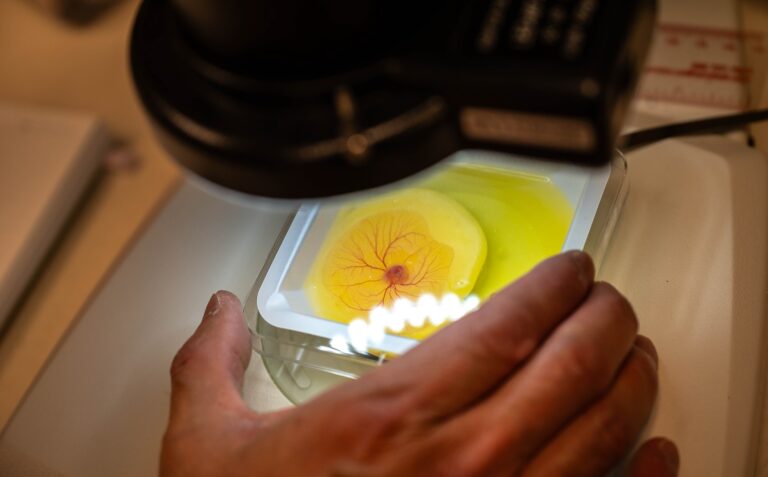Gender-diverse youth feeling more welcome at home, less welcome in public
That’s according to a new report from researchers at UBC and the McCreary Centre Society which compares data from the 2018 and 2023 B.C. Adolescent Health Surveys.

Photo credit: Martin Dee.
Gender-diverse youth in B.C. have seen improvements in family and community support over the past five years, but still face higher rates of discrimination, harassment and bullying than cisgender peers in school and other spaces.
That’s according to a new report from researchers at UBC and the McCreary Centre Society which compares data from the 2018 and 2023 B.C. Adolescent Health Surveys. The surveys are conducted in schools across B.C. every five years. In 2023, close to 38,500 youth ages 12 to 19 completed the survey with more than 1,800 identifying as trans, nonbinary or questioning their gender.
Researchers Dr. Elizabeth Saewyc (ES), a UBC nursing professor and executive director of the Stigma and Resilience Among Vulnerable Youth Centre, and Dr. Annie Smith (AS), adjunct professor and McCreary’s executive director, discuss the findings and what more needs to be done.
Your report highlighted some positive changes since 2018. What stood out the most?
ES: We saw a number of different signs that families were safer and a bit more supportive of their trans and nonbinary young people. For example, gender-diverse youth were less likely to have been kicked out or run away from home compared to five years ago. Family support is important, because it helps young people cope with stressful situations. It wasn’t all good news for all genders—fewer nonbinary youth in 2023 said their family respected them or understood them than in 2018. The report shows the gaps are still there for gender-diverse youth, but narrowing for some of the really challenging circumstances, like being kicked out of home.
AS: We saw other positive trends including significant increases in the percentage of trans girls who rated their health as good or excellent in 2023. Most also had at least one close in-person friend. We definitely see the real value of youth having friends that they can share their ups and downs with, as well as the important role that supportive adults can play. So, it was also great to see a rise in gender-diverse youth reporting they had a caring adult in their community or neighbourhood.

What else has changed?
ES: This report is an opportunity to see how trans and nonbinary young people are doing since the COVID-19 pandemic, and amidst growing anti-trans protests and movements in Canada and worldwide. Our findings suggest that these protests and negative environments may be affecting their safety and well-being. Compared to cisgender peers, gender-diverse youth were two to three times more likely to face discrimination at school, on the street, on public transit and in health-care settings.
AS: In 2023, all gender groups, including cisgender youth, reported feeling less safe at school and particularly in washrooms and change rooms compared to five years ago. We also noticed nearly all gender groups reported a rise in discrimination based on gender or sex in 2023, except for trans boys, who already had the highest rate of discrimination based on gender or sex. This is concerning, as we know that if young people are feeling unsafe and being victimized they cannot fully participate in school and community life. This can also have a knock-on effect into adulthood, including things like whether or not they want to go on to post-secondary education.

How can schools, families and communities better support B.C.’s gender-diverse youth?
AS: We know that when youth have safe and caring families, schools and communities, they report better health and well-being. Young people in the survey provided some suggestions about what’s needed, including addressing bullying and discrimination at school, and ensuring youth know how to access mental health services. We also heard from a lot of young people that they want more sex ed, and for that sex ed to be inclusive of all gender identities and sexual orientations.
ES: Although most B.C. schools have inclusive policies and resources for students, the rise in discrimination and bullying over the past five years, especially in locations outside of school, is a significant concern. We need to keep working to make environments more inclusive, and ensure 2SLGBTQ+ youth feel safe and supported at school and at home, in their communities, and in health-care settings.

Featured Researcher
Dr. Elizabeth Saewyc, PhD, RN, FSAHM, FCAHS, FAAN, FCAN
Professor, School of Nursing
Executive Director, Stigma and Resilience Among Vulnerable Youth Centre



